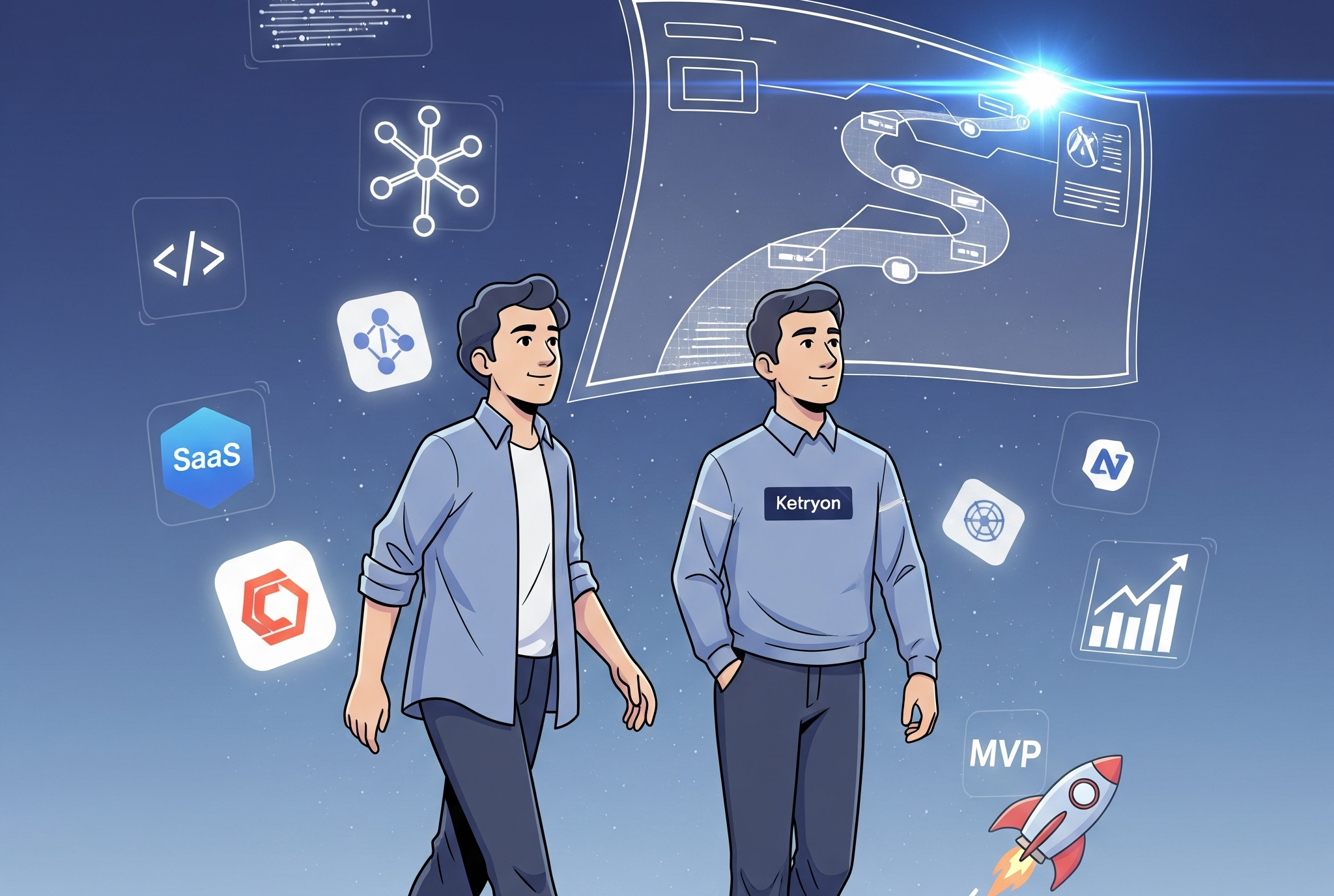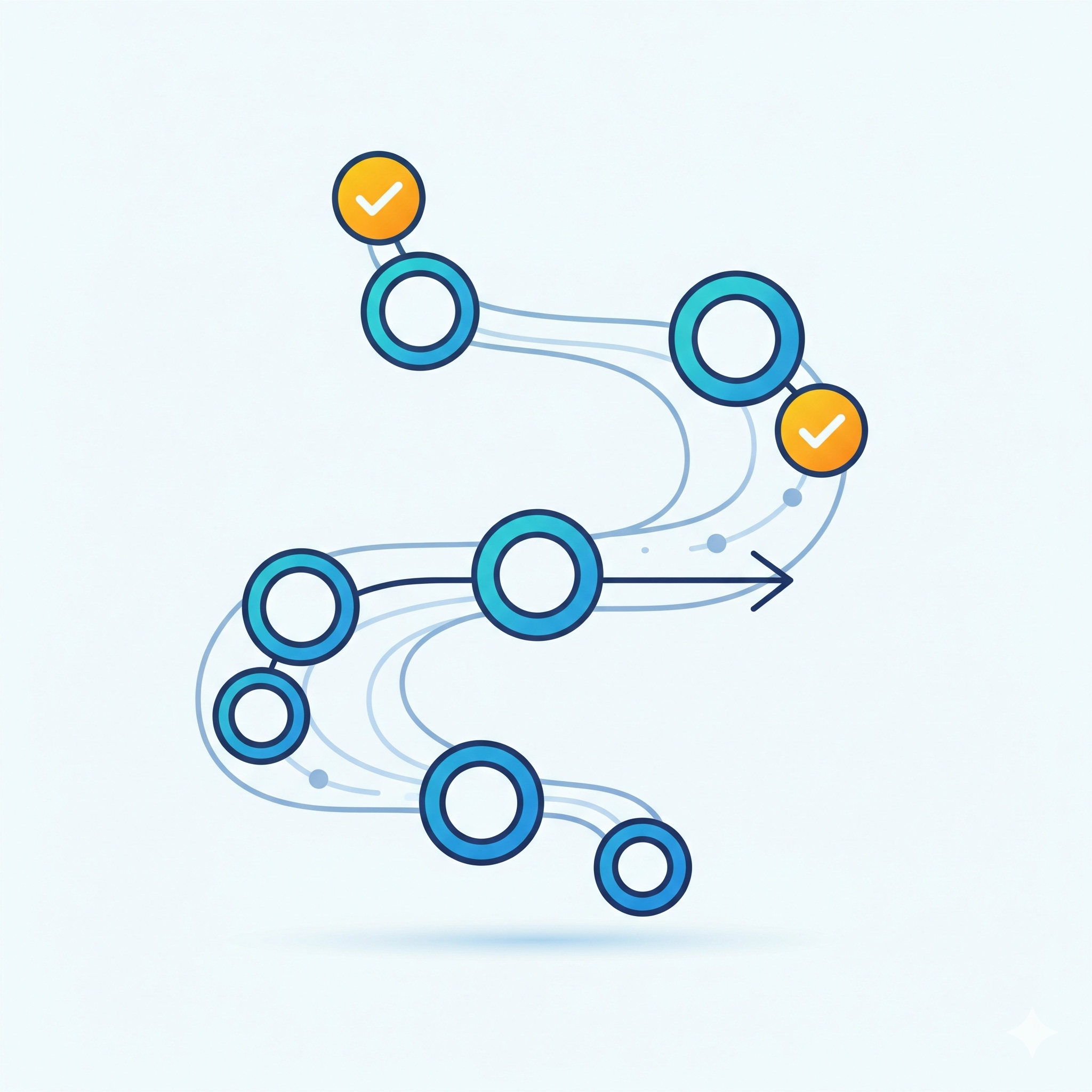Why Solopreneurs Need a Full-Stack Developer in 2025


Let’s be real—starting a business as a solopreneur is like building a plane while it is in the air.
When you are caught juggling marketing, admin, strategy, and support, the last thing you want to happen is figuring out how to link APIs or debug backend logic.
A full-stack developer can design, build, and maintain both the frontend (what users see) and the backend (what powers the app) of your software.
This kind of end-to-end support is precisely what solopreneurs need to move fast, keep costs lean, and stay in control.
“Full-stack developers help firms save money, increase flexibility, and streamline development processes.” VelanApps
The unique ability of full-stack developers to handle all developmental needs makes them ideal for businesses that operate under tight budgets and urgent deadlines.
But hiring the right one?

The majority of solopreneurs encounter many unforeseen difficulties during this process.
The following article breaks down:
To determine if a full-stack developer is the right fit, it is essential to understand how they function.
One common myth is that full-stack developers are programmers who spend all of their time glued to their laptops with their hoodies down.
The reality is that they are so much more than that.
AllStarsIT reports that full-stack developers perform two primary responsibilities.
Here’s what they bring to your table:
“Their ability to work across the entire tech stack makes them particularly valuable for startups and fast-moving projects where adaptability is key.” AllStarsIT
A full-stack developer will guide your MVP development process from start to finish through a single development cycle that minimizes handovers and technical foundation work.
Imagine hiring a contractor who can build the foundation, install the lighting, and decorate the interior.
That’s the real value of full-stack.
VelanApps recommends that experienced full-stack developers show expertise in these specific areas:
Framework/ libraries: Vue and React
Languages: HTML and CSS
And a seamless user experience and user interface.
A backend encompasses executing the application logic, managing the server, and performing database operations. Developers achieve this through a combination of tools, frameworks, and languages, including:
Databases: MongoDB and MySQL
Languages: Node.js, Python, and JavaScript.
Development Operations and Cloud platforms: Docker, Kubernetes, and AWS. (Scalability and deployment)
API’s: GraphQL and REST. (Communication between front-end and back-end)
A talented full-stack developer's abilities include more than simply understanding code.
Their responsibilities extend to include soft skills such as:
Performance optimization - being able to solve challenges creatively to ensure that applications run smoothly across various platforms.
Best security practices - encryption and data protection measures.
Collaboration - clear communication with developers, designers, and project managers who may not be versed in coding languages is key.
Time management and accountability - flexibility and the ability to work in fast-paced environments, all while delivering upon promises.
Now that you know what to look for, let’s talk about what to avoid.
Multiple developers claim to be full-stack experts, but their actual abilities don’t line up with these assertions.
Selecting the wrong developer can not only result in financial losses that could reach up to tens of thousands of dollars, but more importantly, these setbacks can affect your product's standing in the market.
VelanApps and AllStarsIT identify these five significant warning signs that small businesses should watch out for:
You should exercise caution when dealing with developers who lack any visible work examples.
Great developers understand project timelines and are very good about keeping you in the loop about potential delays rather than making false promises.
Projects being completed on time directly depend on how fast you receive responses from your team members.
A developer who can’t give you a straightforward process of development and only focuses on specifications without offering strategic guidance may not be suitable for your project.
Your business tools, including CRM, payment gateway, and calendar systems, require integration with each other to work effectively. This is a deal breaker.
“Almost every recruitment specialist says that it is becoming more difficult to hire employees… which is why a methodical approach is critical.” VelanApps
Here are some key indicators that may suggest you consider hiring a developer.
A full-stack developer is a highly cost-effective option because hiring a front-end and back-end programmer separately can get quite expensive and time-consuming.
Especially if you have a small or independent project, having someone who can see the entire process is essential.
Shifting priorities in response to evolving technological needs requires flexibility. A full-stack developer can help keep teams agile and responsive.
Speed and efficiency are key when designing an MVP. From managing databases to building interfaces, a full-stack developer can do it all.
This streamlines the development process, enabling it to reach the market faster without the need for multiple specialists.
Curious about how to bring your product idea to life without draining your budget? Check out our in-depth guide — How to Build an MVP for Solopreneurs Without Breaking the Bank.
Fixing bugs, improving performance, and providing regular updates can be a hassle and resource-intensive process. A full-stack developer handles those tasks with ease.
However, knowing when you need a full-stack developer is only half the battle—
The other half is knowing how to hire the right one. Because as valuable as a full-stack developer is, the wrong hire can stall your momentum, drain your resources, and leave your project worse off than when it started.
What steps can you take to prevent getting burned?

The process of hiring developers as a solopreneur can feel daunting, especially if you lack experience in code evaluation and technical interview procedures.
A step-by-step hiring process ensures you find someone who delivers.
Here's your playbook.
Establish a clear understanding of the project you plan to build.
The project requires a detailed description of the features, along with a platform selection for mobile and web, as well as timelines and financial resources.
Looking to hire a full-stack developer for a startup?
When posting a job for your project, include as detailed a description as possible from the previous step that outlines all your intended requirements.
Some things to consider:
Now that you know what you are looking for, you are ready to move on to the next step.
Finding the right candidate involves creativity and knowing where to look.
Leverage your network through referrals by asking employees, colleagues, or business partners for their recommendations.
Conferences and tech meetups are other great places to connect with outstanding talent.
Partnering with coding boot camps or universities is also a great way to find emerging talent. Providing an internship is a great way to find potential hires early.
Employing offshore developers enables firms to find people who better fit their needs in less time and at a lower cost. All while maintaining qualified experts on staff who can deliver work of the same (or greater!) quality.” VelanApps
A good place to start is a potential hire's portfolio.
Emphasize those who have experience working with both front-end and back-end technologies.
The combination of genuine project reviews, open-source contributions, and GitHub-based clean code platforms enables you to understand both the practical experience and technical abilities of that developer.
The technical interview process should move beyond memorized definitions because you need to witness their problem-solving approach.
It should provide practical tasks instead of traditional textbook-based questions.
A brief take-home assignment or real-time coding exercise will show their ability to tackle actual problems rather than merely engage in theoretical discussions.
The actual understanding emerges from this point.
“97% of IT companies that utilize skills-based recruiting avoid mismatches, according to the State of Skills-Based Recruiting in IT 2024 survey. This is higher than the 90% industry average. You need the right tools to assess candidates’ talents objectively and hire the top web developers for your business.” VelanApps
Focus on asking open-ended questions about challenges that a potential hire has faced, particularly in web development or API integration. These questions should reveal their ability to problem-solve under pressure.
The following questions are some examples of what could be asked during the interview process:
A great full-stack developer doesn’t just code in a vacuum—they need to communicate clearly with designers, production, and other developers.
So, pay close attention to how they explain technical ideas and how they interact during the hiring process.
When you combine that with a look at their portfolio and technical chops, you’ll get a better picture of whether they’re the right fit for your business.
No, before pulling the trigger, consider assigning a small paid project that involves creating a landing page or adding a single feature to the system.
“You can’t afford to guess—test them with a real-world task to see how they think, communicate, and execute.” AllStarsIT
Once the right full-stack developer passes with flying colors, you will feel confident moving forward.
With us, you’re not hiring just another developer—you’re bringing on a team player who will help you every step of the way to bring your product to life.
Ketryon offers comprehensive full-stack development services to solopreneurs and small startup teams through our specialized offerings.
Our team provides more than just coding services, as we also help develop business strategies, unify your SaaS tools, and create scalable systems.

"Ketryon transformed our healthcare operations with a seamless digital platform. They understood our complex laboratory workflows and delivered a solution that our patients and staff love using every day." Daniel Hjortval, CEO, Provsvaret
🚀 Services Designed to Launch & Scale Your Vision:
Here’s what sets us apart:
Full-stack developers enable you to build your business more efficiently through their expertise and specialized skills.
Think one developer can’t change your business? Guess again.
When you hire the right full-stack developer, you don’t just get code—you unlock systems.
Picture this:
Connected SaaS tool stack powered by integration, all built and connected by one full-stack developer.
Employing a full-stack developer for startup operations depends on several factors.
The cost of hiring a full-stack developer through freelancing services ranges between $30 and $150 per hour.
Full-time (US): $90K–$150K/year
Offshore/Remote: $40K–$70K/year
The selection of your developer depends on your financial resources, project duration, and technical requirements.
Yes!
Developers who work on short-term projects include implementing payment systems, fixing bugs, and developing dashboards.
Ensure that you define all project requirements before commencing work.
Skipping the test project. Resumes and buzzwords don’t reveal how someone communicates or solves problems. Always test first.
Absolutely. Great full-stack developers will assist you in linking your tools through:

If you’ve read this far, you’re not just thinking about building your product—you’re ready to do it!
Hiring a full-stack developer is one of the smartest investments you can make as a solopreneur. It gives you the tech power of a small team, wrapped into one lean, strategic partner.
Now your business doesn’t need additional support because you have access to all the necessary tools for MVP development, operational automation, and tool integration.
You bring the vision. We bring the code, strategy, and integrations.
👉 Book a free consultation with Ketryon
👉 [Download the Checklist Now]
Stop duct-taping your tech stack. Let’s build something that grows with you—together.

Full-stack developer and founder of Ketryon. Passionate about helping solopreneurs build scalable web solutions.
Stay up to date with Ketryon news and updates